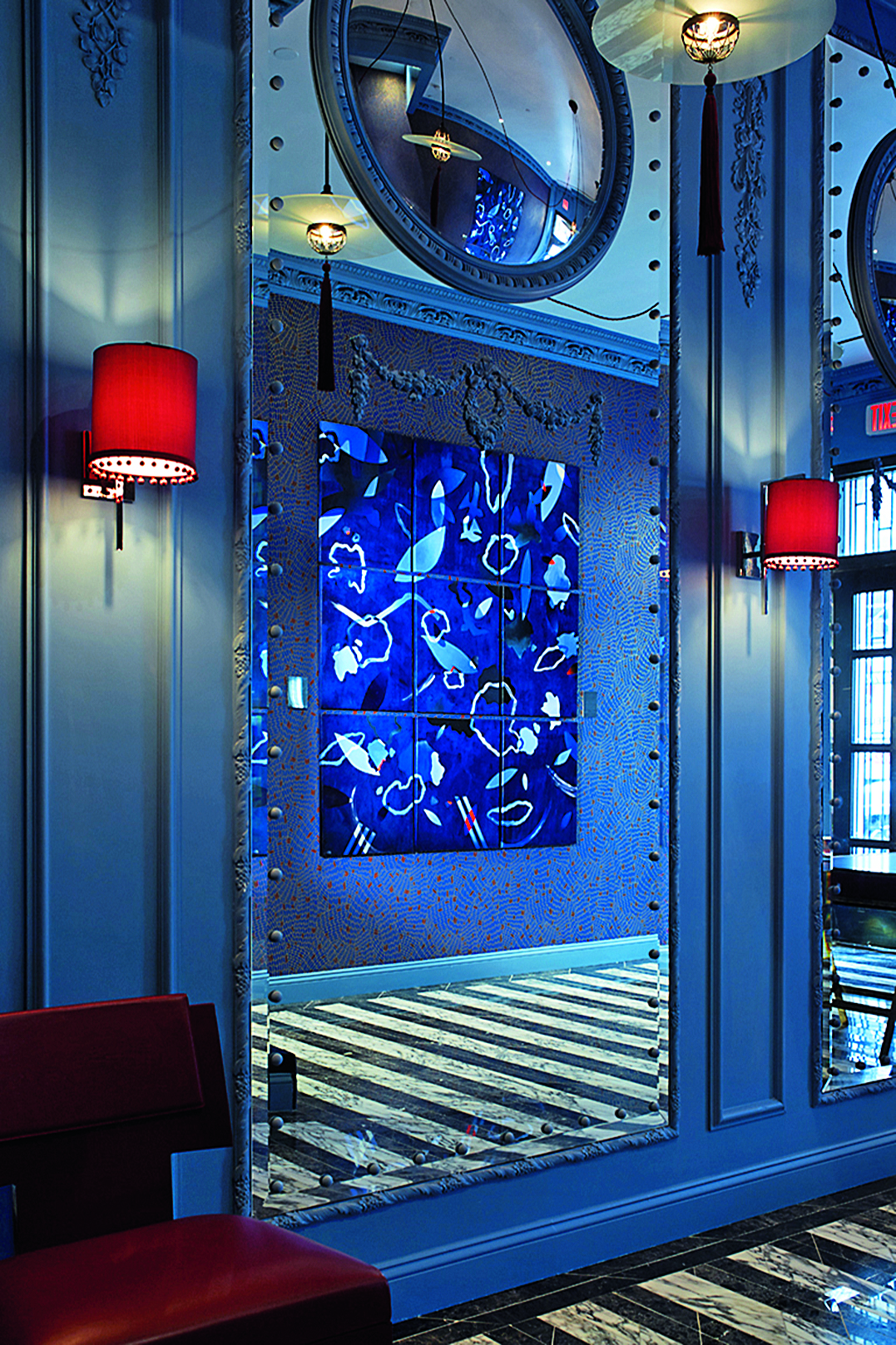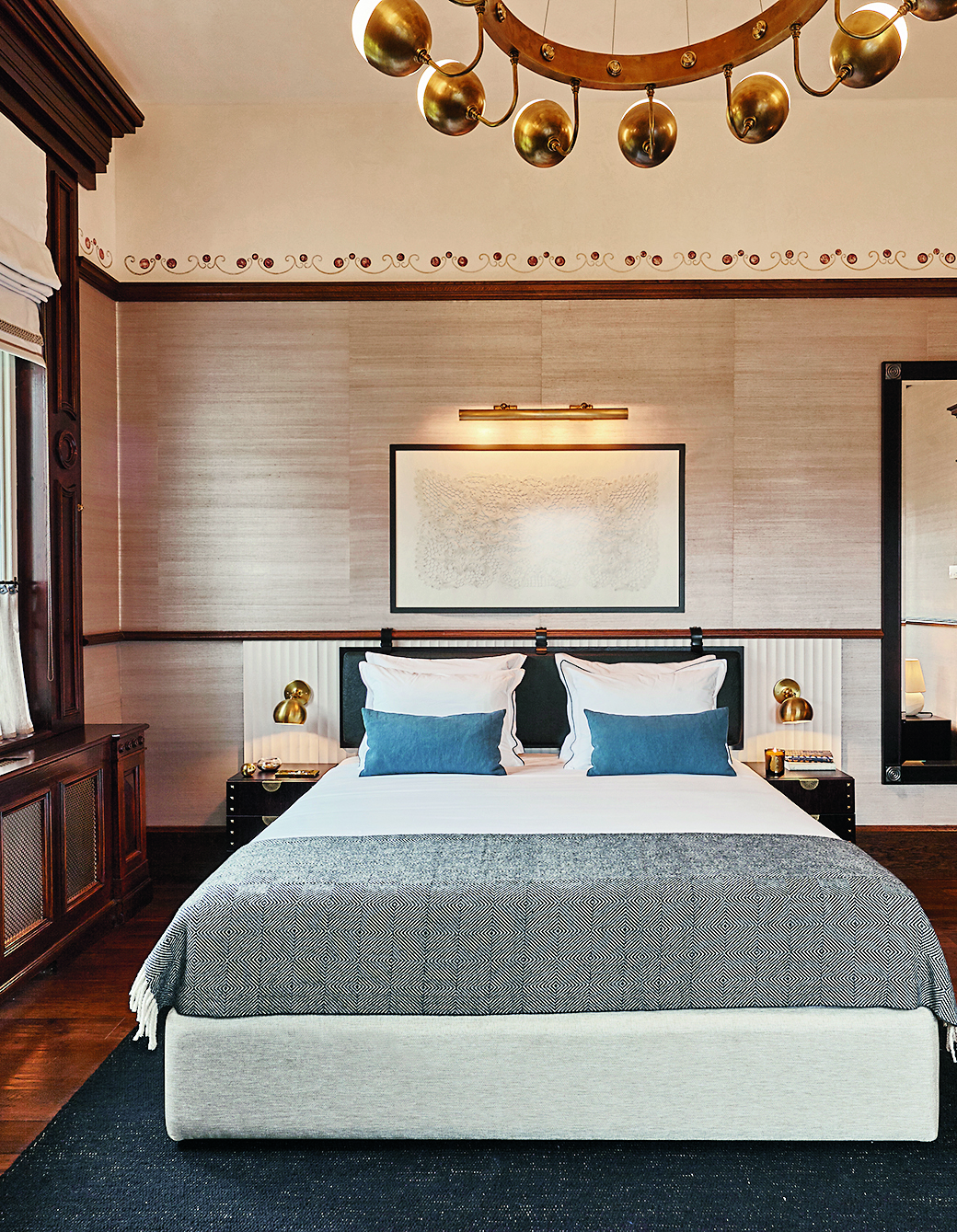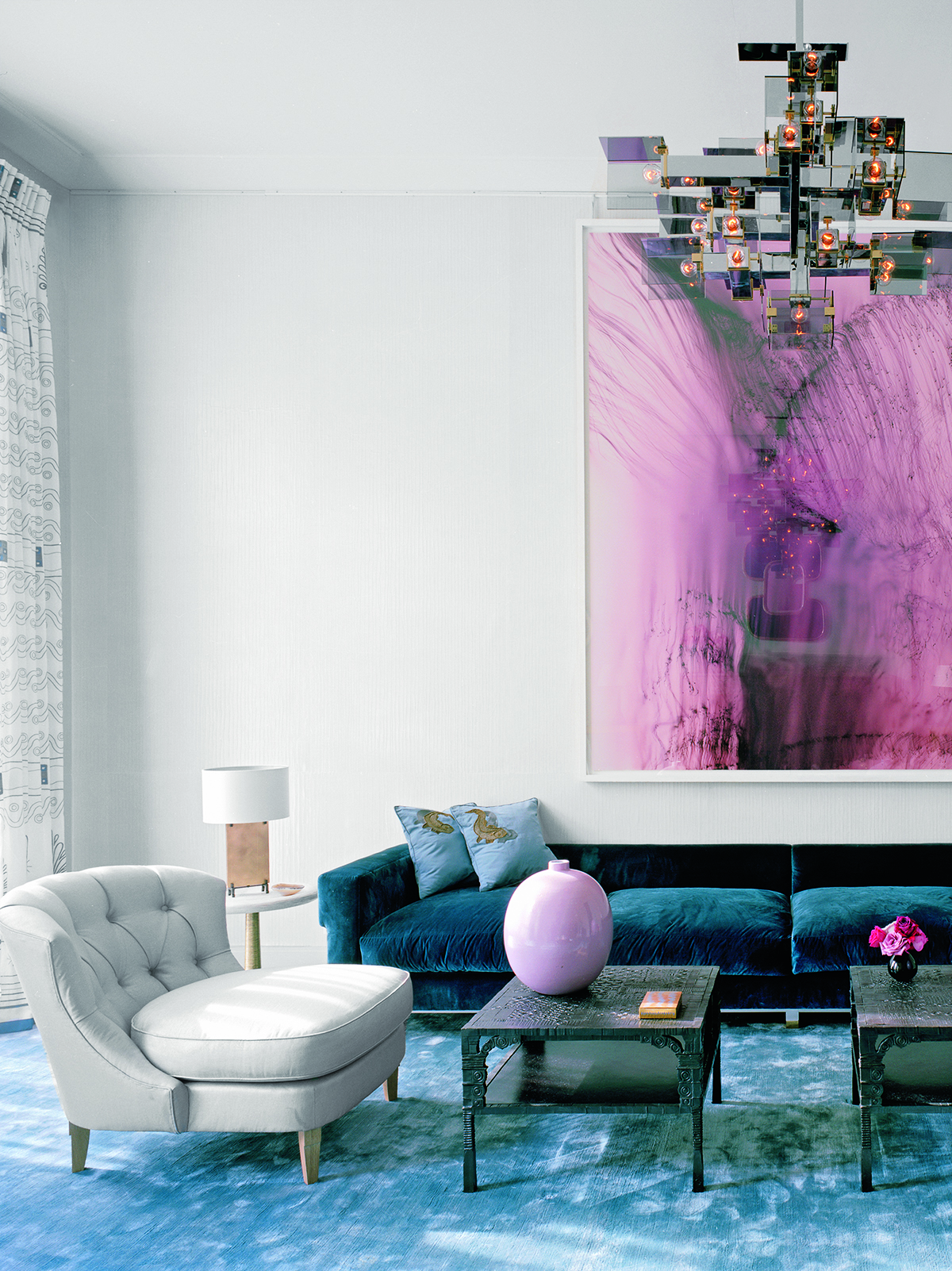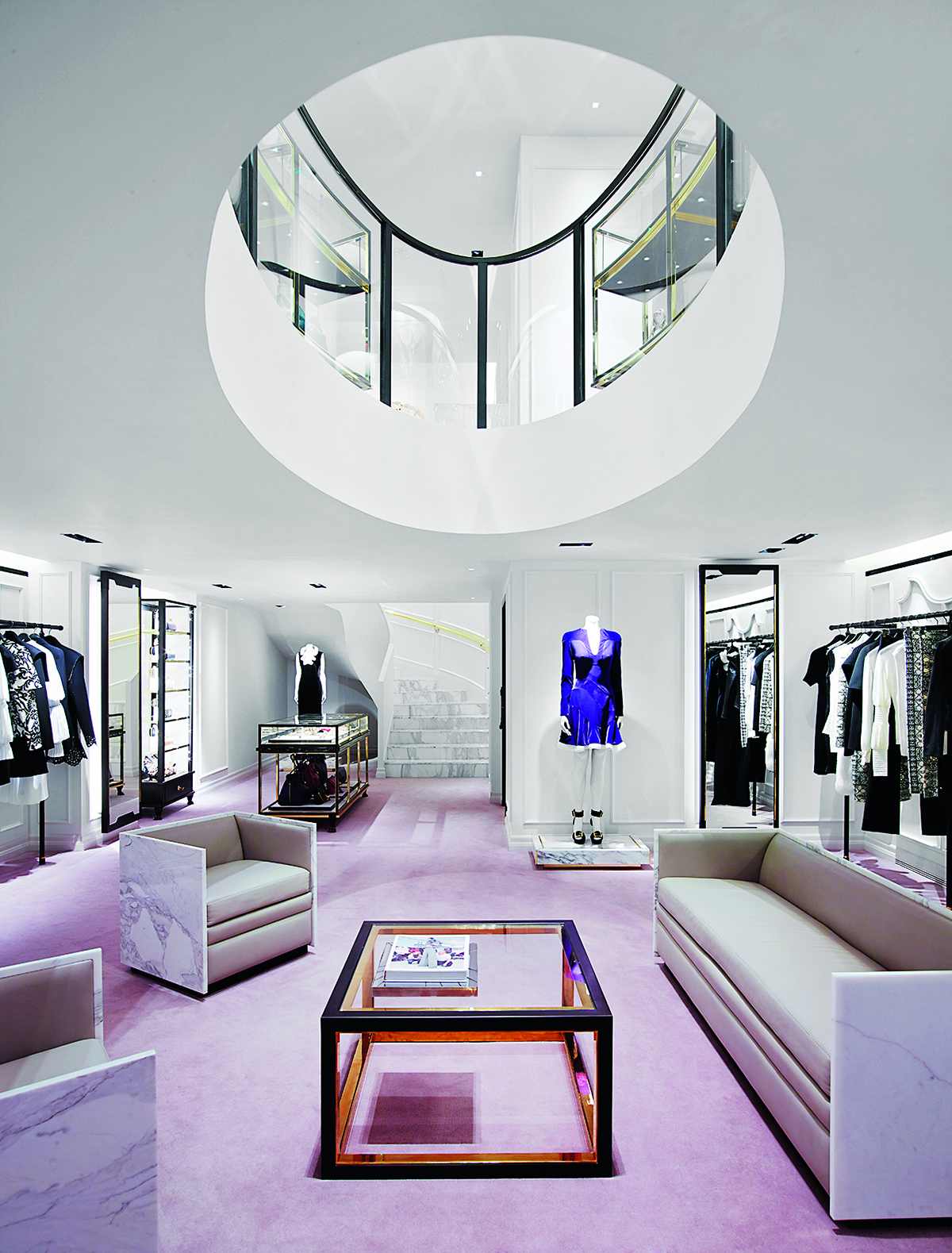WHAT INSPIRED YOUR INTEREST IN DESIGN?
My dad was a ‘contractor’ (actually a painter and decorator), building pubs as I was growing up in Wales, so I was going to job sites with him, seeing lots of mood and sample boards and just knew, by the age of 18, that I wanted to go into interior design.

WHEN DID YOU GET YOUR BIG BREAK?
After completing a BA and Masters in Interior Design at Birmingham City University, I wrote to a few key designers who I admired, including David, for work opportunities. I was struck by the sense of authority in his work – it wasn’t about gimmicks or trends and always had a sense of purpose. When I came to London to meet him, he asked me to do some things on a computer while the whole office went to lunch. On his return, he asked me to start a week later.
HOW DO YOU BEGIN A PROJECT?
I don’t like to rush into a design until I know the space – in my own home, when we moved in 18 months ago, we stripped it bare, painted it white and lived in it before making any big decisions. It’s important to know where the light falls, how each room sounds. Don’t be afraid to paint half a wall and live with it. I’ve even been known to stay overnight in a client’s house to really get a feel for the space!

WHERE DO YOU LOOK FOR IDEAS?
The Livingetc newsletters are your inside source for what’s shaping interiors now - and what’s next. Discover trend forecasts, smart style ideas, and curated shopping inspiration that brings design to life. Subscribe today and stay ahead of the curve.
Auction catalogues. For example, a recent one was for French 20th-century furniture. I see things in them I don’t see anywhere else and it takes me on tangents, learning about different designers and eras. I use Evernote to upload photos and handwritten notes, which it puts into folders for me – scrapbooking ideas is a great way to start the creative process. I like to print ideas out and put them on the walls to see how well they relate to the room.
HOW ABOUT COLOUR PALETTES?
I play a lot with paint. I think it goes back to my mum’s love for painted coloured ceilings, which I’ve inherited, so I’m always trying to bring in colour to a project.

HOW WOULD YOU DESCRIBE YOUR STYLE?
I like rooms to have personality and there’s always a sense of femininity – I like soft edges and curves. I find clean lines are fine in architecture but, for interiors, it’s about soft materials and textures that make you feel good about yourself. I like to mix periods and styles too – I love the way Günter Leuchtmann’s Le Tre Streghe pendant for Tecnolumen, designed in 1981, or the brightly polished gold Coolicon light by Factorylux look both utilitarian and glamorous against the proportions and mouldings of my Victorian house.
HOW DO YOU PREFER TO ACCESSORISE?
I like pieces to have a story and life of their own. One of my favourites is a £20, 1m-wide Japanese paper lantern bought on eBay – it looks so dramatic over the dining table, with such a beautiful glow. I also collect unusual pieces by artists such as ceramicist Katharine Morling – her work is like sketches in 3-D.

WHAT'S ESSENTIAL TO EVERY ROOM YOU DESIGN?
Lighting. Dimmer switches on lamps, plug switches on walls and traditional light bulbs, not LEDs, because they give such a fantastic quality of light. I think of lighting in layers – at eye level when you’re sitting and standing, and how glamorous lighting feels on the face from the side and below. Too much overhead lighting feels oppressive.
WHAT HAS DESIGNING HOTEL ROOMS TAUGHT YOU?
Rooms need to be self-intuitive – it needs to be easy to find a plug, turn on a light, have enough storage and shelving to put things. I’m not keen on too much hi-tech either – keep things as simple as possible and stick to software – rather than hardware-based systems to ensure it’s future-proof before you invest.

WHAT'S WORTH INVESTING IN?
Invest in the things you need to last, such as brassware (my favourites are Kallista’s Pinna Paletta collection), floors, light switches, white goods and mattresses – get the best quality you can afford and everything else can change and grow with you. And never underestimate how many power sockets you’ll need (but don’t do decorative ones or try to hide them – they are what they are and they have an important function, so celebrate them).
HOW DO YOU KEEP YOUR DESIGNS FRESH?
We’re always exploring new materials – I find a wealth of ideas through sites such as the-gathered.co.uk (a collective of artisans from around the world innovatively working in a variety of materials). At Gleneagles (the five-star luxury resort in Scotland), we created a paper-backed cashmere the colour of the heather in the surrounding countryside, which was woven locally to cover not just the walls but mouldings and woodwork too. Other favourite tricks include studding to add a layer of interest and personality to doors, bedside cabinets and chest-of-drawers and stencilling (as in the Callas House hotel, Budapest) for a simple but charming way to transform a room. The website Architonic is a great resource for researching interesting materials.

WHAT ABOUT FAVOURITE TEXTURES?
Rather than using patterned fabrics, I like to take a series of plains and create a patchwork for curtains. I also love velvet – particularly Holland & Sherry’s cotton velvets – because they’re super-practical, easy to clean and make curling up in a ball on the sofa comfy and cosy. I’ve also been experimenting with Scagliola, an artificial marble that resembles stone, which we recently used to make chairs for the Alexander McQueen stores.
AND ANY UNEXPECTED TOP TIPS?
A great lamp shade can transform the most boring bases (A Shade Above is a great online one-stop, made-to-order shop) – and carpet. People are sceptical of carpet, but there’s nothing better than laying something wall-to-wall, such as Kasthall’s Goose Eye Icon flatweave – it’s timeless, hard-wearing, but so soft underfoot. Lots of layers of fabrics in a bedroom also improves your quality of sleep – it provides great soundproofing and a cosseting feel.

FINALLY, WHAT ARE SOME OF YOUR UPCOMING PROJECTS?
We’re working on two private homes in Hong Kong and the refurb of the iconic The Hotel Windsor in Melbourne (to open in 2019). We have an ongoing furniture collection for Promemoria and a new collection of fabrics and wall coverings for Baker. We’re working on [US gourmet food brand] Dean & Deluca’s first UK store in Mayfair, a country club in Thailand and a restaurant with Mexican chef Martha Ortiz on Park Lane.
For more info about David Collins Studio, visitdavidcollins.com
The homes media brand for early adopters, Livingetc shines a spotlight on the now and the next in design, obsessively covering interior trends, color advice, stylish homeware and modern homes. Celebrating the intersection between fashion and interiors. it's the brand that makes and breaks trends and it draws on its network on leading international luminaries to bring you the very best insight and ideas.